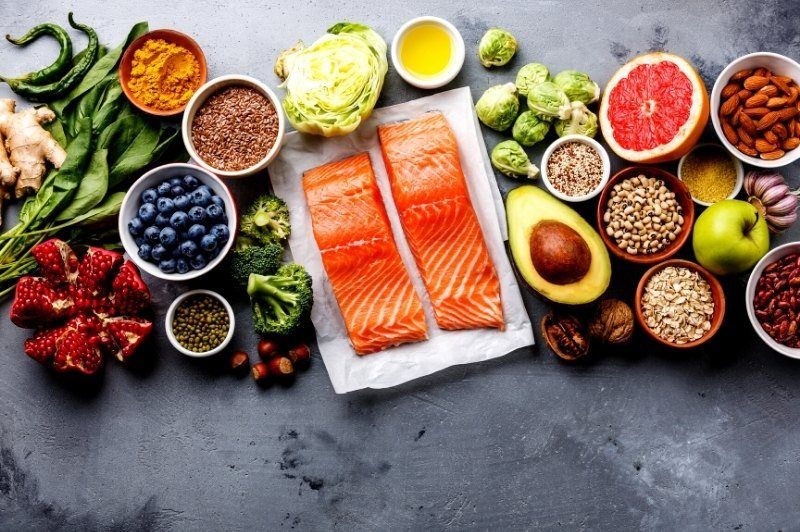Holistic Healing Kuel Category Expert: Carol Lee
One of my ‘bug-bears’ is that healthy eating has been made over complicated. I believe you can actually make it really simple if you focus on adding in or swapping ingredients. The following are my 5 easy ways to change your diet and up your nourishment.
1. Swap white processed grains for whole grains.
Grains such as short grain brown rice, oats, pot barley and rye can give us lots of vitamins, minerals and fiber and of course natural sweetness, energy and good taste. Buckwheat and quinoa, although not technically grains, are delicious too.
The goodness in whole grains contrasts completely with processed ‘white’ grains that are devoid of nutrients and elevate our blood sugar. These grains make up common everyday foods such as pasta, white bread, pearl barley, white rice, crackers, cakes and biscuits.
Here are some easy swaps:
- Short nutty short grain brown rice for white paella rice.
- Brown basmati for white basmati rice – great with curries.
- Wild rice or quinoa for white rice in salads.
- Rolled oats or raw buckwheat for instant porridge oats.
- Unrefined pot barley for pearl barley – add into casseroles or stews.
- Pumpernickel wholegrain rye bread for regular white or wholewheat.
2. Add-in more greens
“studies continually confirm that populations that eat a diet high in green leafy vegetables run a far lower risk of heart disease and other chronic diseases”
Research is showing that less that 10% of people in the UK are eating five portions of fruit and vegetables a day so can you imagine how many portions of greens are not being eaten! All the while, studies continually confirm that populations that eat a diet high in green leafy vegetables run a far lower risk of heart disease and other chronic diseases.
Here are my favourite add-ins:
- Add-in spinach to a smoothie or any one pot meal.
- Add-in a huge salad to a meal.
- Use Spring green leaves, collards or lettuce leaves to make a wrap instead of bread.
- Add-in a green smoothie as part of your meal.
- Swap regular chips for kale chips; massage uncooked kale with oil and simply bake in the oven with olive oil and some sea salt
3. Add-in healthy fats
Fats definitely get a bad press, in the early 80s when I was in my 20s. The low fat/no fat diet was in full swing and we were led to believe that fat makes us fat and gives us heart disease. Today, we know that it is, in fact, sugar and excess processed carbohydrates that make us gain weight and leads to a whole catalogue of chronic diseases.
The polyunsaturated fat omega 3, in balance with omega 6 and omega 9, is essential in keeping our hormones balanced, our brains ‘sparking’ and our bodies and skin young and supple and glowing.
Here’s how to add in healthy fats:
- Add ground seeds on your breakfast and soups, or indeed any meal, to add instant extra value.
- Eat oily fish at least once a week.
- Add your own nut and seed mix to snacks.
- Add avocado into smoothies to add natural creaminess and richness.
- Replace margarine with butter; margarine is a very processed product and as such contains very little goodness whereas butter is a natural saturated fat and if made from milk from a cow grazed on pasture can be rich in omega 3 oils.
4. Swap processed carbs for quick whole vegetable options
Try these quick meal swaps:
- Romaine lettuce for wraps.
- Portobello mushrooms for burger buns.
- Slices of apples, pear and pepper for crackers.
- Courgette (spiralised courgette/zucchini) for spaghetti.
- Slices of sweet potato for lasagne sheets.
“for a diet to be super healthy’, some raw fruit and vegetables need to be eaten everyday”
5. Add-in raw
When food is raw, the enzymes and nutrients have not been diminished through heating or processing. I believe that for a diet to be super healthy’, some raw fruit and vegetables need to be eaten everyday.
Here are some gentle ways to add-in raw food:
- Add fresh juice to your daily food plan, always have more vegetables than fruit portions.
- Add-in smoothies; blend the whole fruit and vegetables so you get the benefit of the fiber, add in oats, yogurt, nuts and seeds and blend for a complete smoothie meal.
- Make a huge green salad and add in grated different colored veggies as part of it.
- Try sprouting seeds, these are super nutritious, easy to do and very tasty.
- Make friends with your grater and experiment with veggies like celeriac, parsnip, turnip, beetroot and ginger.
- Spiralize; use a spiralizer to make lovely raw noodles that you can have instead of pasta
Start slowly by making swaps and/or add-ins one meal at a time and see if you notice a difference. Check out these three recipe templates to make the perfect soups, smoothies and salads.


About the Author:
Carol Lee is a Naturopathic Nutritional Therapist, Sugar-freedom coach, Creative Kinesiologist, Teacher and Author from the U.K. She has been working in Complementary Health for over 25 years. Her holistic approach to healing and transformation is about listening to, witnessing and working with the body’s ‘knowing’. Carol believes this is where we hold our wisdom, experience and capacity for change, especially as mid-life women. She works with women wanting to kick the sugar habit, those who are navigating health challenges, or who are wanting to up-level their life in some way; helping them to clear the blocks to success and wellbeing. She is currently enjoying her empty nest, and the freedom it brings, with her partner Jon. She loves the coast and walking the wild landscape of South West UK, snuggling her sweet rescue cat Stevie, gardening and eating delicious, nutritious food.




















